
Spotlight on Hamadōri: the Fukushima Innovation Coast Framework
Spa Resort Hawaiians: A Tale of Hula Dancing, Hot Springs, and Resilience in Fukushima
Guide to Japan Travel- English
- 日本語
- 简体字
- 繁體字
- Français
- Español
- العربية
- Русский
Creating an Endless Summer
Spa Resort Hawaiians, a popular leisure spot in Iwaki, Fukushima Prefecture, brings the warmth of summer all year long. The domed all-weather water park that serves as the facility’s heart is filled with live palm trees for a lush, south-seas ambience and boasts a large tank in the center of the flowing pool that is home to some 1,300 tropical fish. It accomplishes this using the abundant geothermal heat and hot spring water of Iwaki Yumoto Onsen.
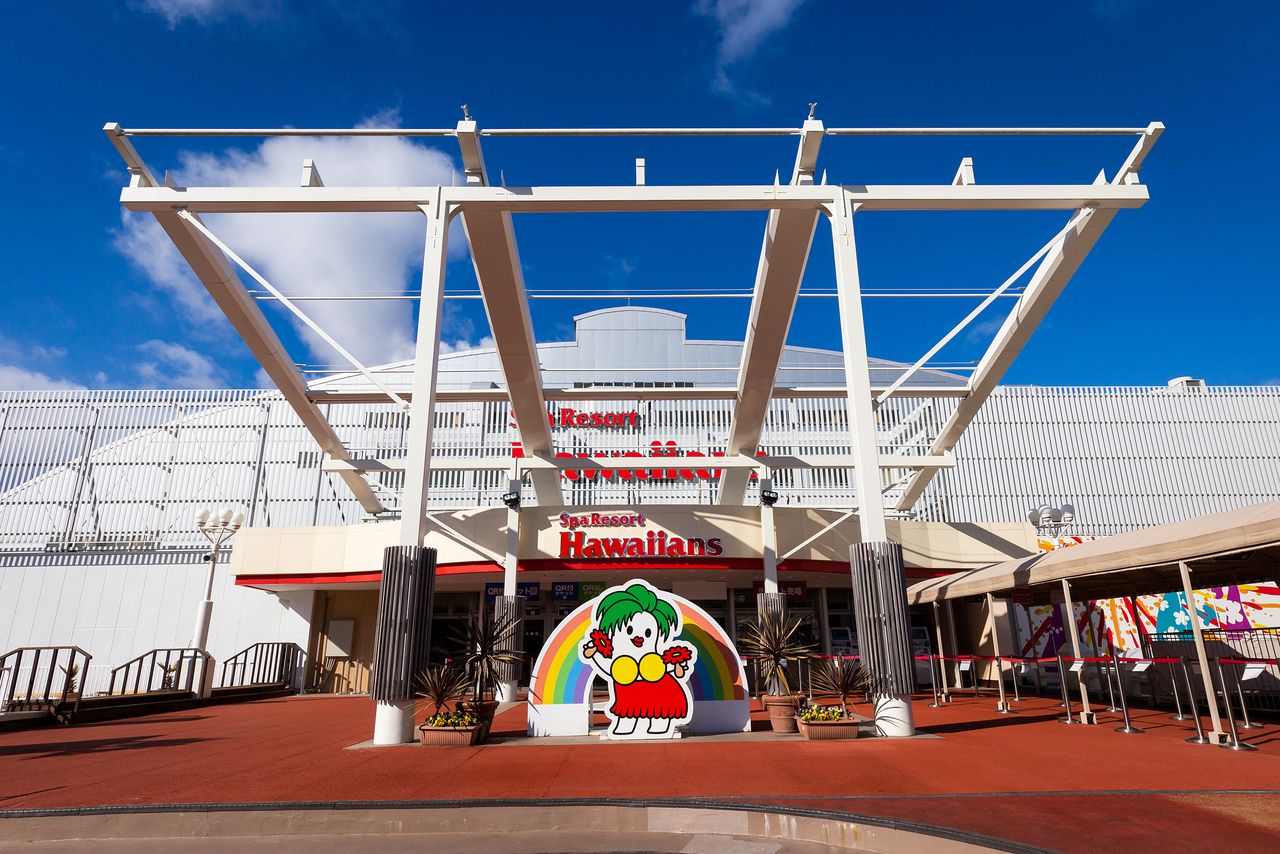
The entrance of the water park at Spa Resort Hawaiians.
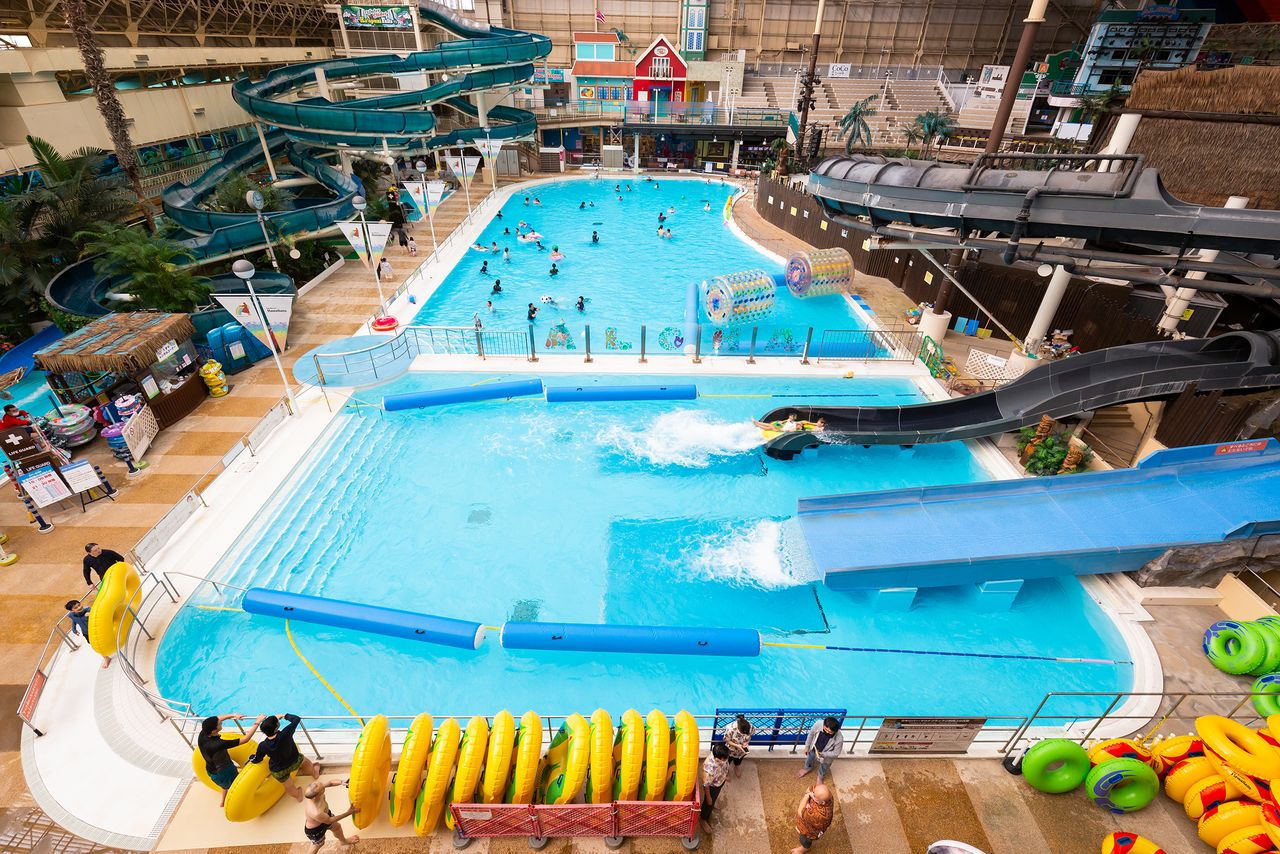
The water park’s massive main pool is kept at a comfortable 30 degrees Celsius year round.
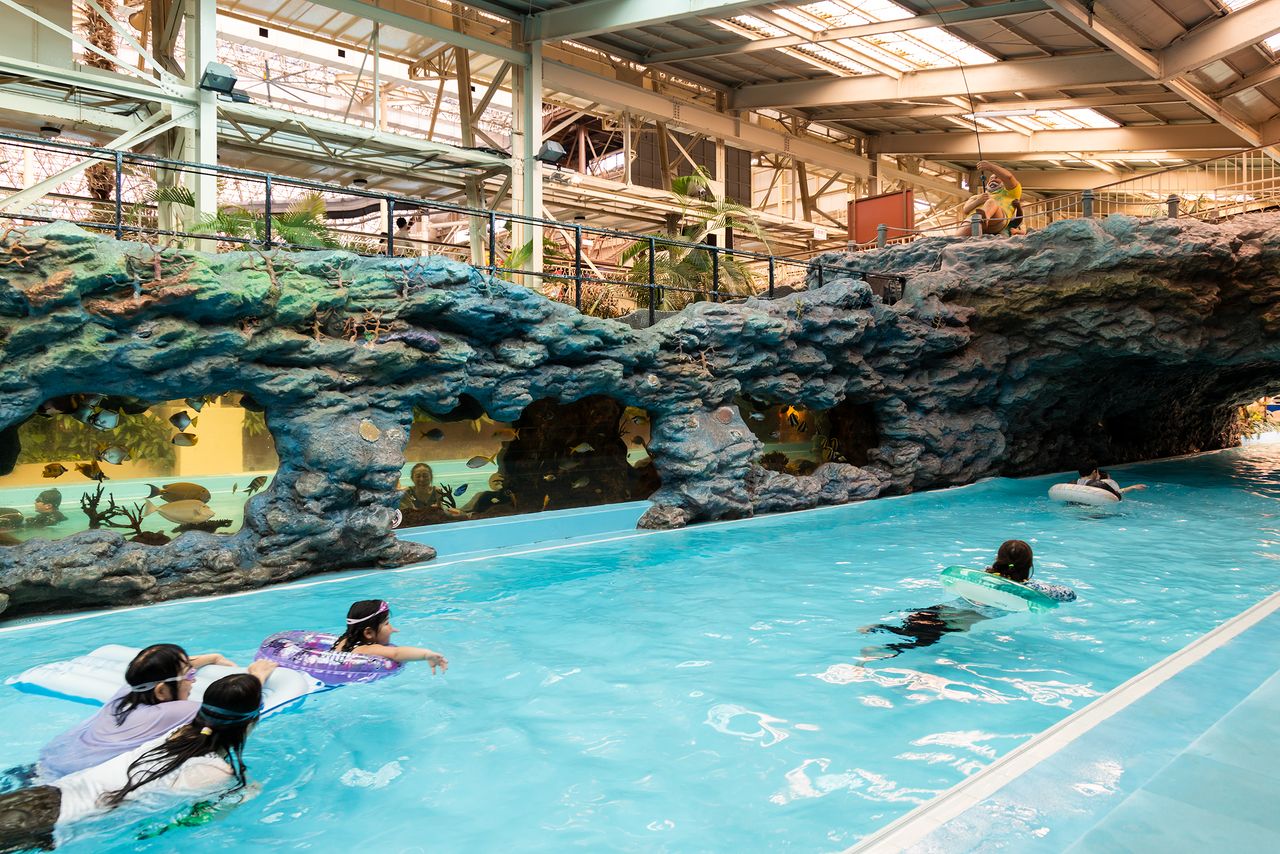
Japan’s first ever “flowing aquarium pool” gives park-goers the feeling of swimming in tropical waters.
The resort’s water park boasts three high-speed water slides that stretch over 100 meters in length. Those wanting even more thrills can try out the Big Aloha, which at 283 meters long and 40.5 meters high holds the title of Japan’s grandest water slide.
The park’s other facilities include the outdoor spa garden Pareo for swimsuit-clad relaxation and indoor Spring Park offering a southern European atmosphere. The outdoor hot spring Edo-jōwa Yoichi, with its massive 1,000-square-meter tub, is a Guinness World Record holder.
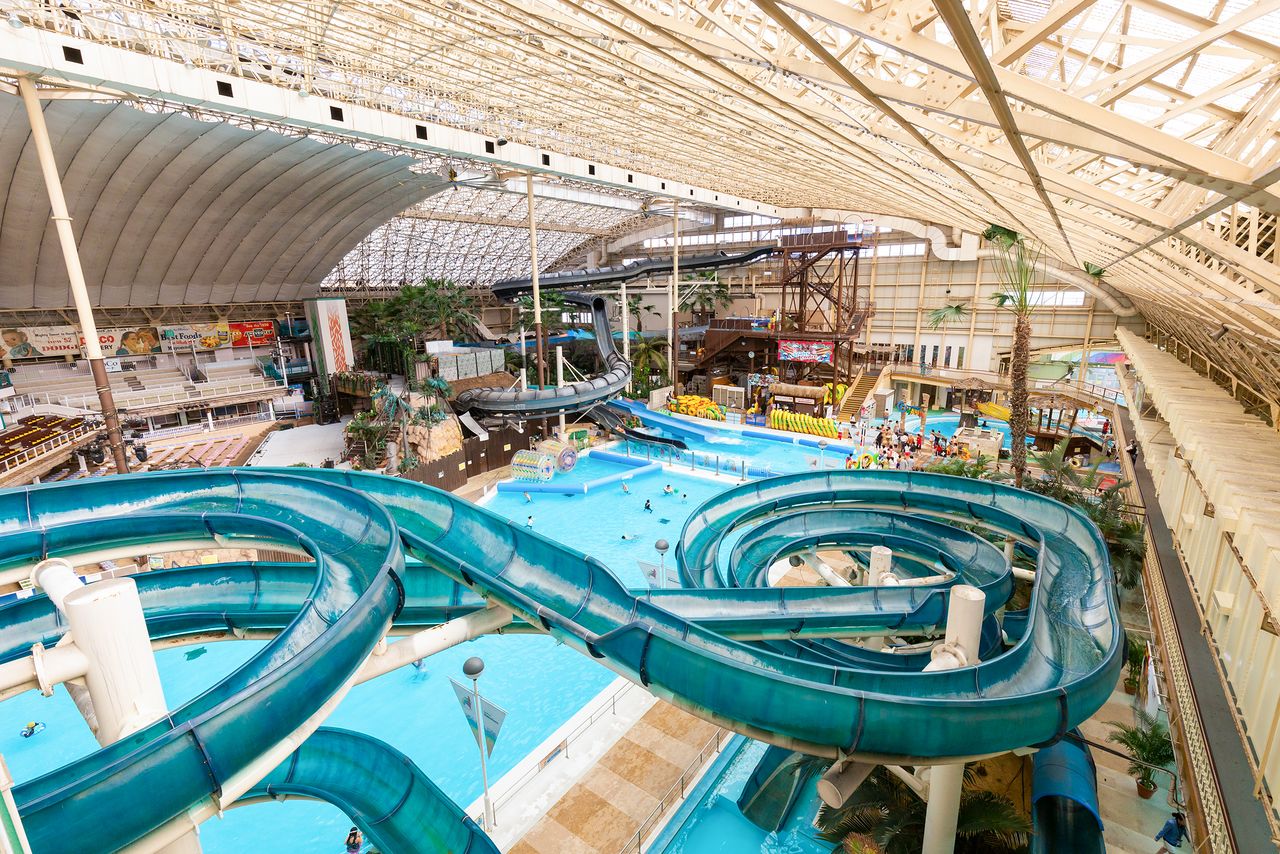
A view of the water park from the top of the 120-meter long slide Ka’apuni Falls.

The Big Aloha towers above the park.
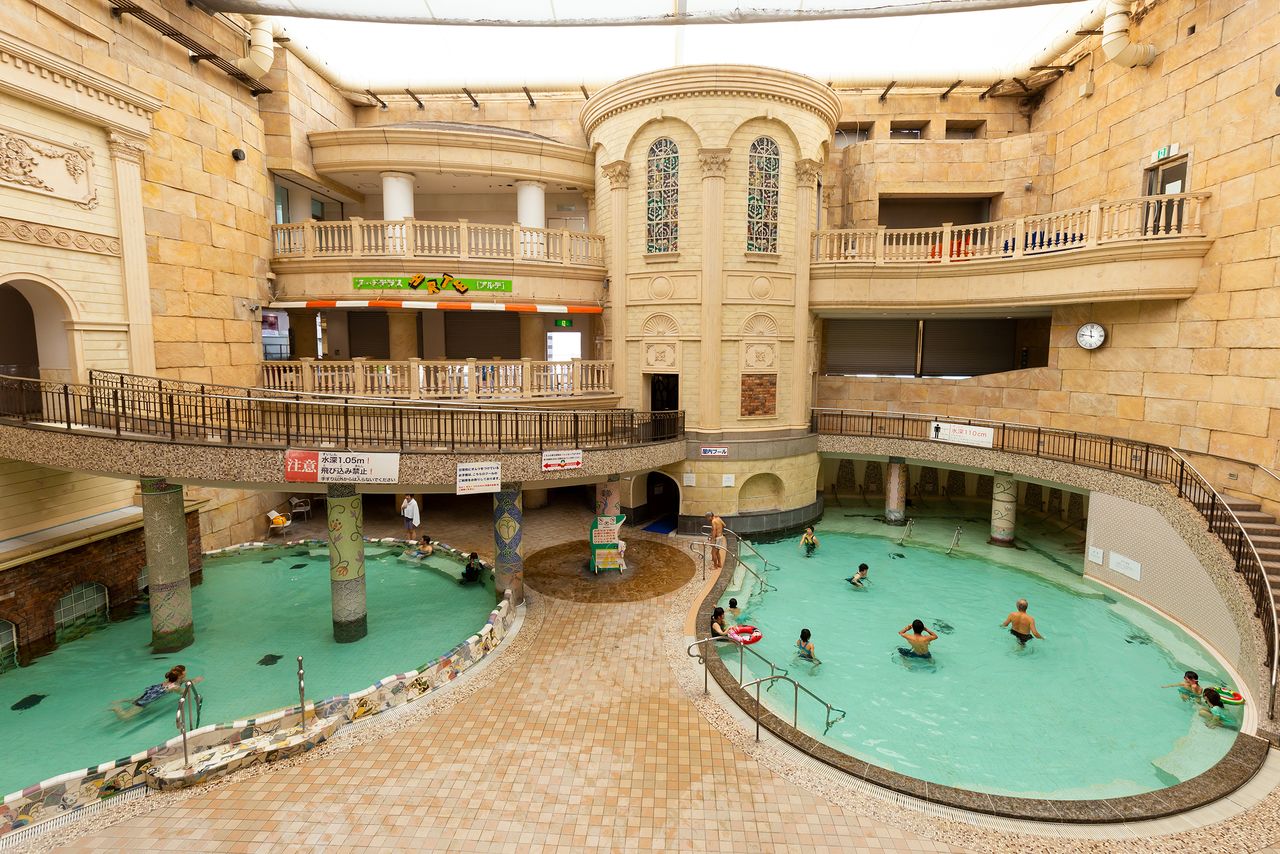
Spring Town recreates a southern European spa.
Setting three hours north of Tokyo by car, Hawaiians is a popular destination for residents of the capital and surrounding metropolitan area, who come for the day or stay overnight. The resort highly recommends the latter so that visitors can leisurely enjoy all the hot springs, meals, and evening entertainment shows at one of the attached hotels.
One of the main attractions of the spa are performances of hula dancing. These shows gained attention in Japan after being featured in the 2006 Japanese film Hula Girls, a light-hearted look at the resort’s founding. Tahitian dances and the Samoan fire knife dance add to the Polynesian atmosphere and sense of everlasting summer.
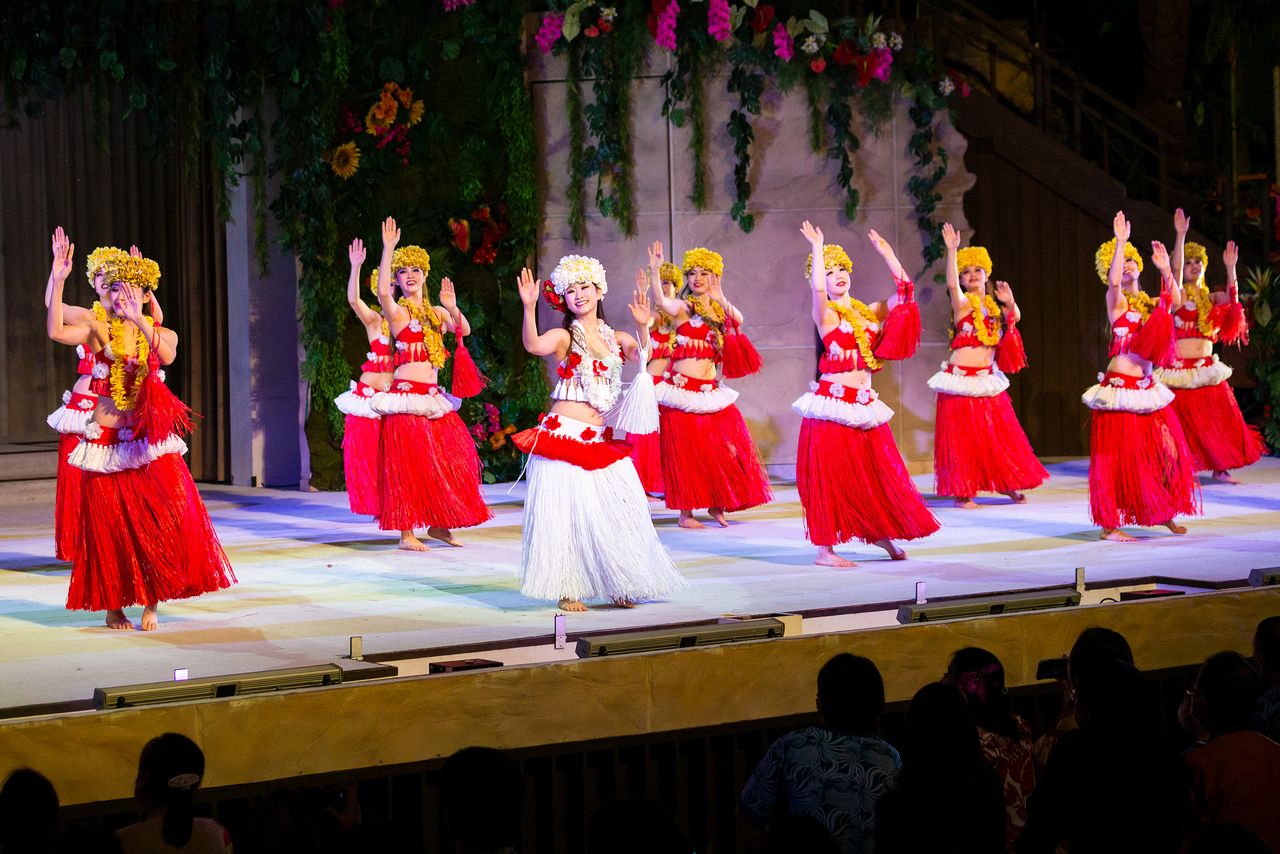
Hula dancers perform in one of the resort’s Polynesian-themed shows.
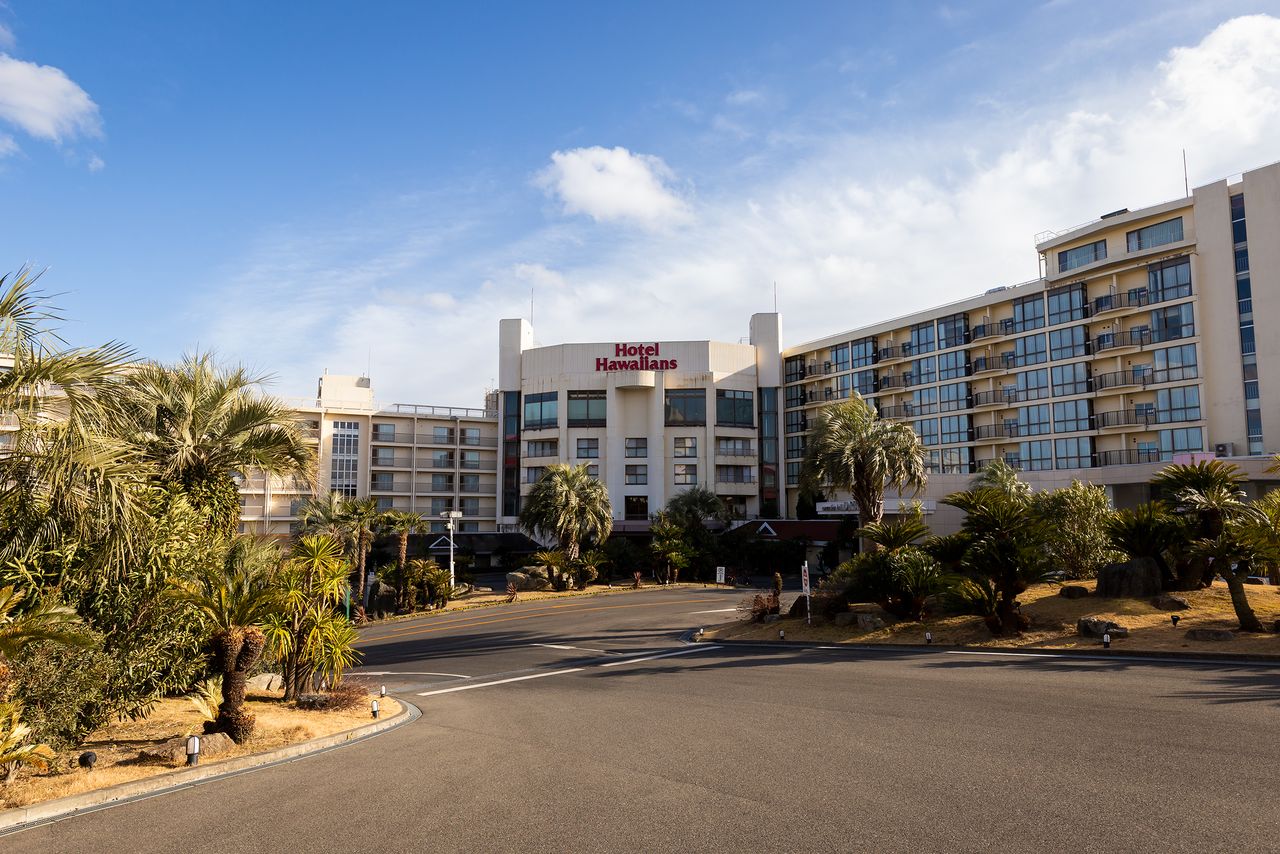
The resort’s main lodging facility, Hotel Hawaiians.

The resort runs a free shuttle bus to Tokyo for overnight guests.
From Coal to a Northern Tropical Paradise
Jōban Kōsan, the company that runs the resort, got its start in 1944 as a coal producer mining the surrounding Jōban coalfields. Then known as Jōban Tankō, it provided coal to meet demand during the Korean War, and later helped fuel Japan’s period of rapid economic growth.
At the company’s height, the fields were mined 24 hours a day in three shifts. Families often worked together, with wives and daughters sorting the coal brought up by husbands and sons. This gave rise to the saying ichizan ikka meaning “One mine, one family,” reflecting both the generational workers as well as the familial bonds between all those working the mines.
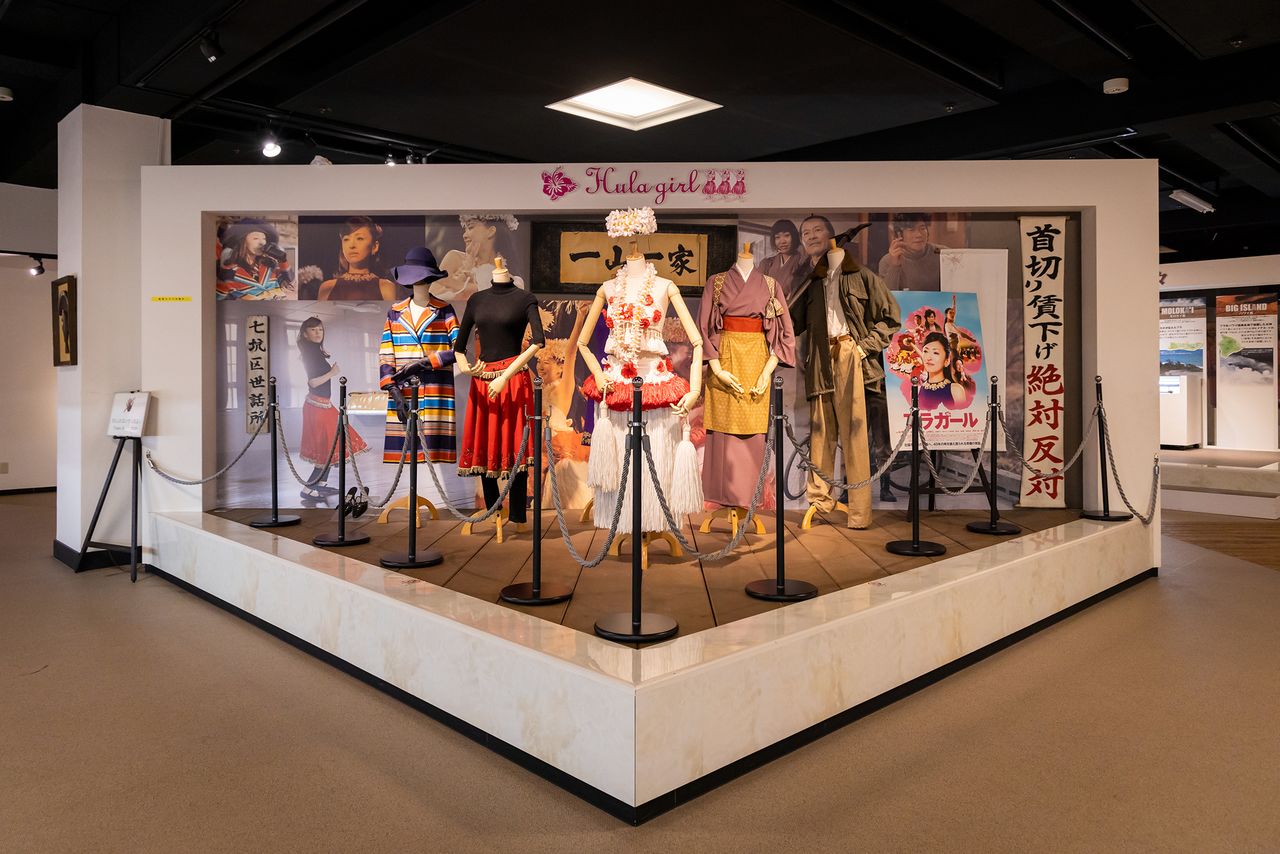
The resort’s Hula Museum presents the history of the dance along with displays of the costumes and other items used in the film Hula Girls.
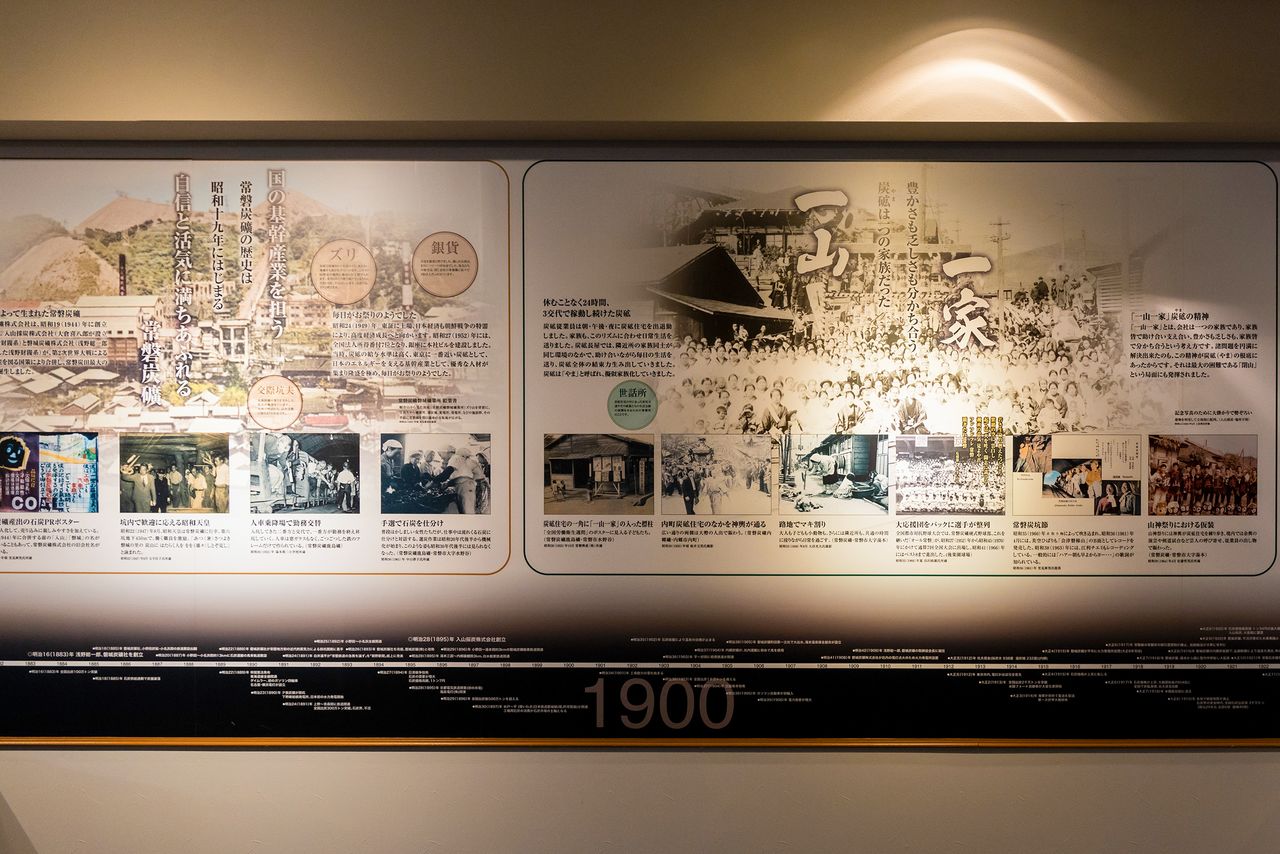
Panels display photographs from Jōban Tankō’s height.
A common problem for mine operations is ground water, which can quickly flood shafts. At the Jōban fields, the issue was exacerbated by the water being from a thermal spring. Miners had to pump out four tons of hot water, which could be as much as 60 degrees Celsius, for every ton of coal they extracted. The heat and humidity of the tunnels meant that workers needed to dunk themselves in tubs of cold water during their shifts to cool down.
By the 1960s, Japan’s energy needs shifted from coal to oil, and Jōban Tankō’s business dried up. In the ichizan ikka spirit, the company tried to protect the livelihoods of its nearly 600 employees by continuing mining at a smaller scale, but the roughly ¥200 million a year it cost to pump water from the mines proved be a heavy burden to the company’s bottom line.
Faced with a seemingly intractable problem, then vice-president Nakamura Yutaka struck on the idea of using the troublesome thermal waters to create a place of endless summer in Tōhoku, a region better known for snow than sunshine.
In 1948, the hit song “Akogare no Hawaii kōro” (Longing for a Hawaiian Cruise) captured the imagination of the Japanese public. However, overseas travel was beyond the reach of ordinary people. Nakamura felt certain that if there was a place where the average person could get a taste of Hawaii, it would be a sure-fire hit.

A photo of the resort’s iconic dome under construction.
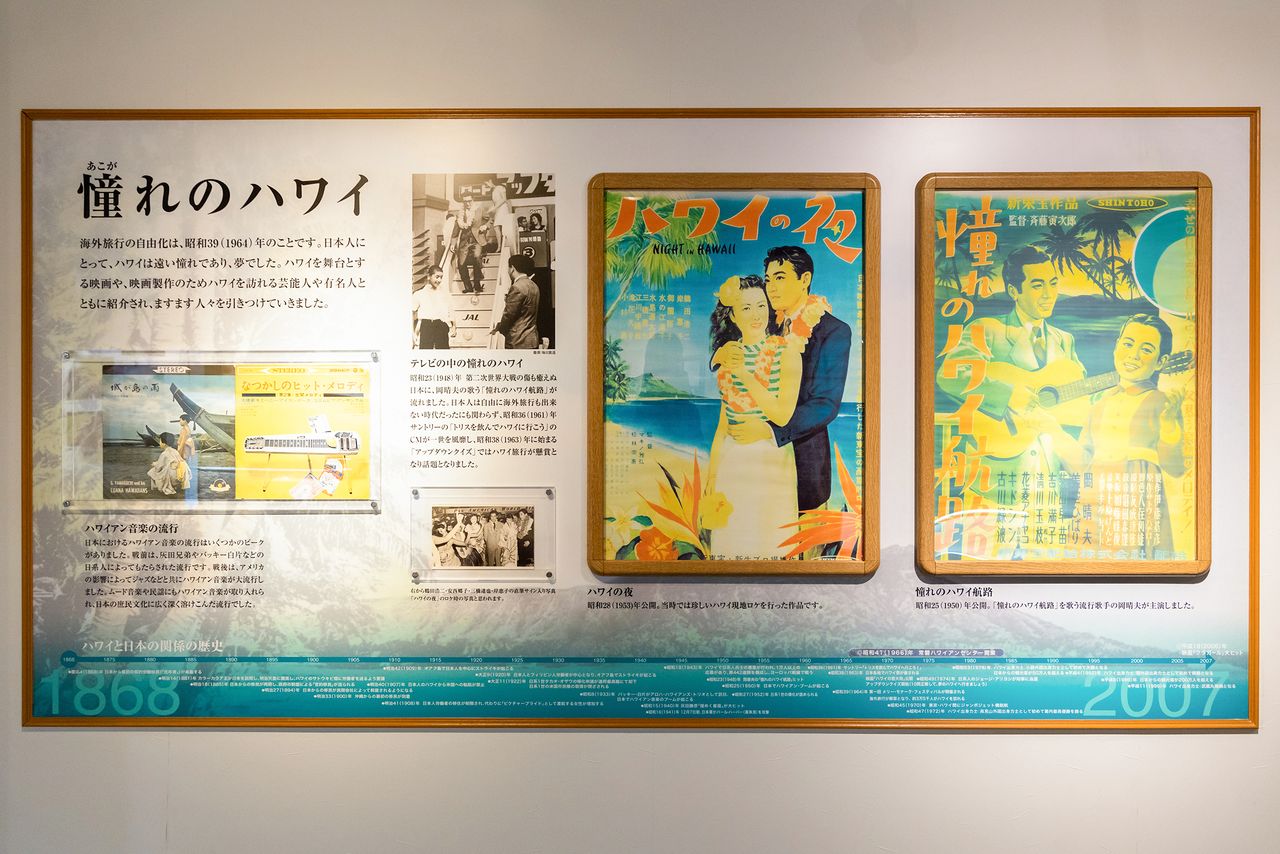
A display highlights the draw of the Hawaiian Islands for Japanese in the early postwar period.
Hula Girls Save the Day
Nakamura understood that simply being warm all year and having a pool was not enough to merit calling the place “Hawaiian.” This led him to conjure up the idea of putting on hula dancing shows. Toward this end, in 1965—the year before the park’s grand opening—the company opened the Jōban Music and Dance Institute and started training its own dancers.
The community initially frowned on the idea of girls “dancing with their belly buttons out,” and the school struggled to find students. Those who did sign up were teased as “naked dancing girls,” but many held steadfast to their dreams of creating a new future for the area and threw themselves into their training. They put on performances in Tokyo and elsewhere ahead of the resort opening to advertise that “a garden of endless summer” was coming to Fukushima.
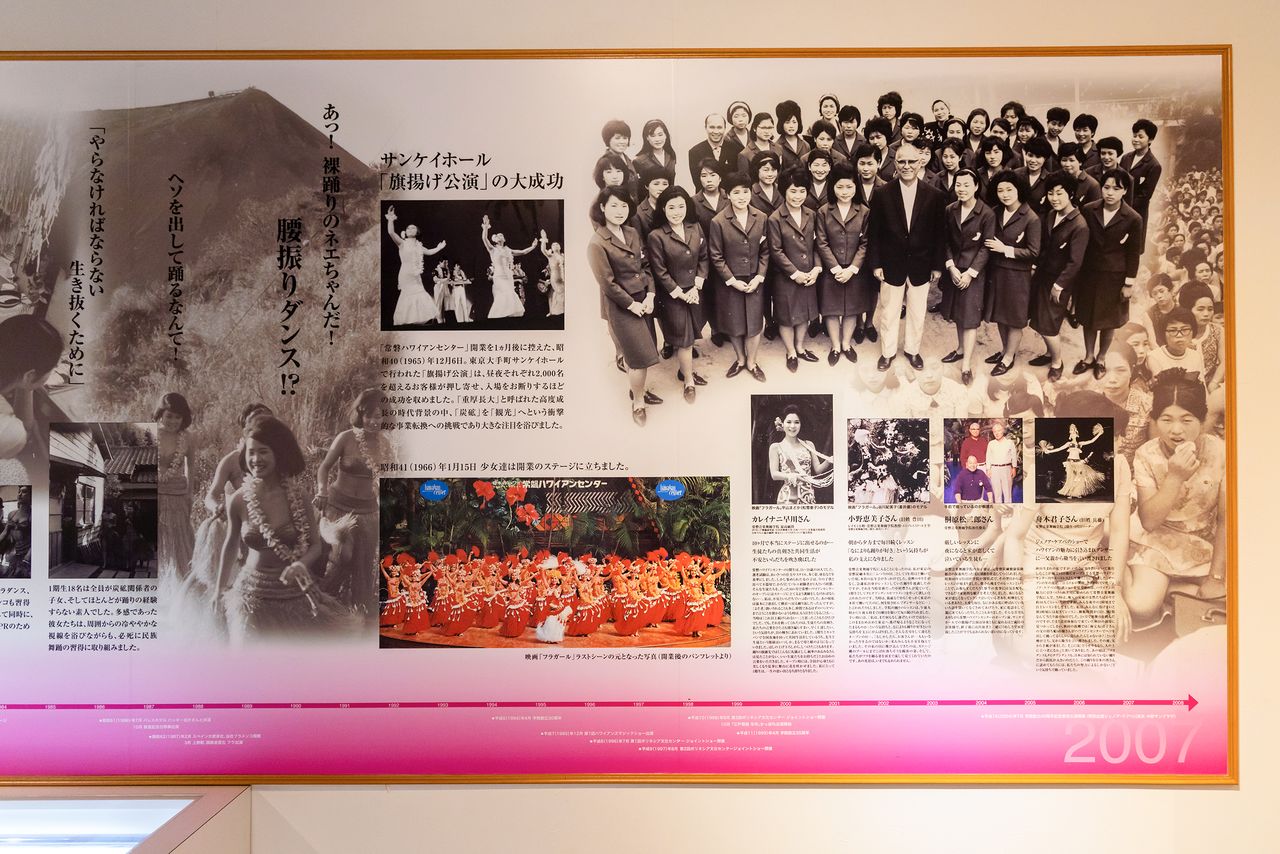
A display looks at the history of the resort’s hula dancers.
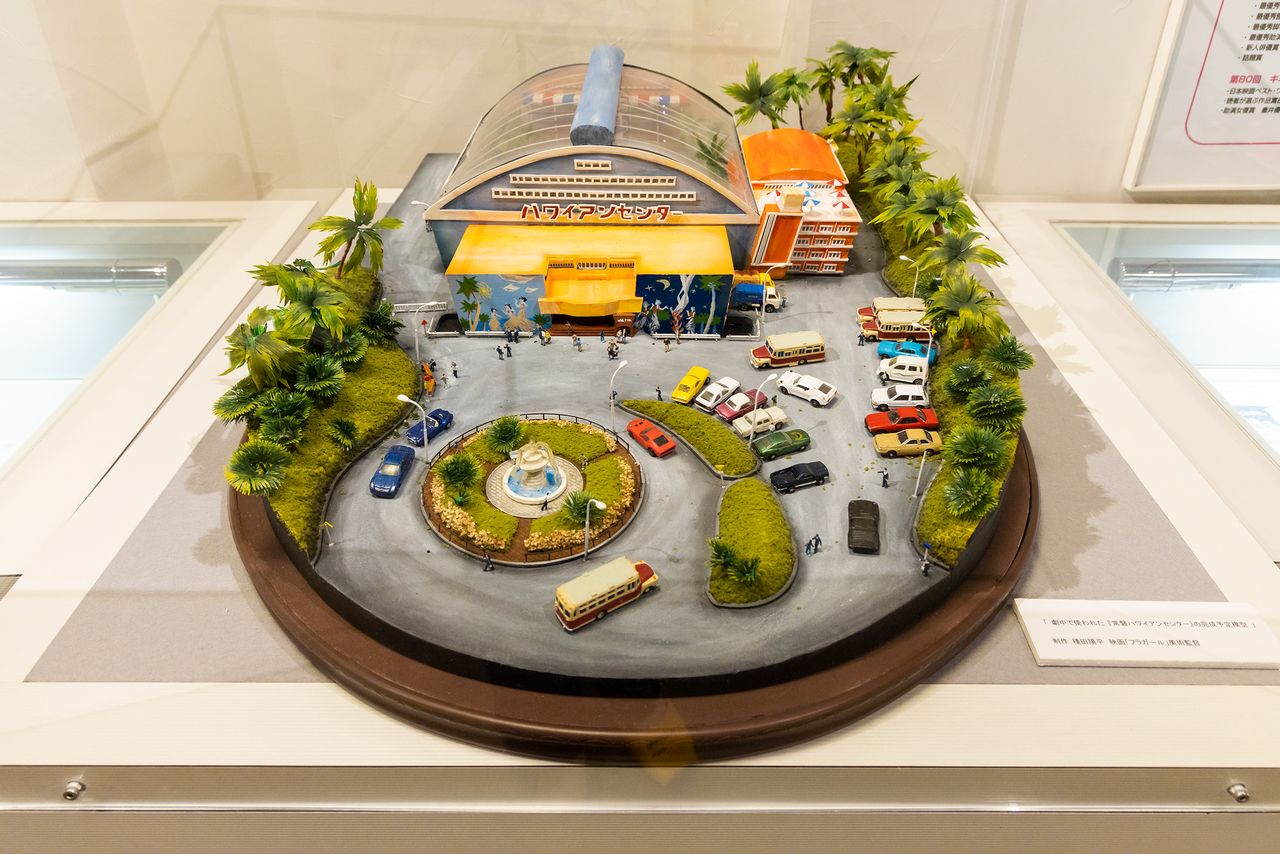
A model of the original Jōban Hawaiian Center.
The resort opened as the Jōban Hawaiian Center in January 1966. Tickets were ¥400 and Hawaiian shirts, which quickly proved to be popular items, were ¥300. The center’s slogan “Visit Hawaii for ¥1,000” struck a chord with the public, helping the spa reach 120,000 visitors in its first year, easily surpassing its initial target of 80,000. By 1970, the center’s fifth year in operation, more than 1.5 million people passed through its doors.
The park introduced a steady stream of new attractions, including a flowing pool, water slides, and hot spring baths. Beyond just offering a taste of Hawaii, it gradually transformed into a full-fledged onsen theme park. When the Jōban Expressway was extended to Iwaki in 1990, the center rechristened itself as Spa Resort Hawaiians.
The release of the film Hula Girls in 2006 brought nationwide attention to the spa, and the following year the resort welcomed a record 1.6 million visitors. Its wide variety of attractions appealing to different ages earned it a steady stream of repeat customers.
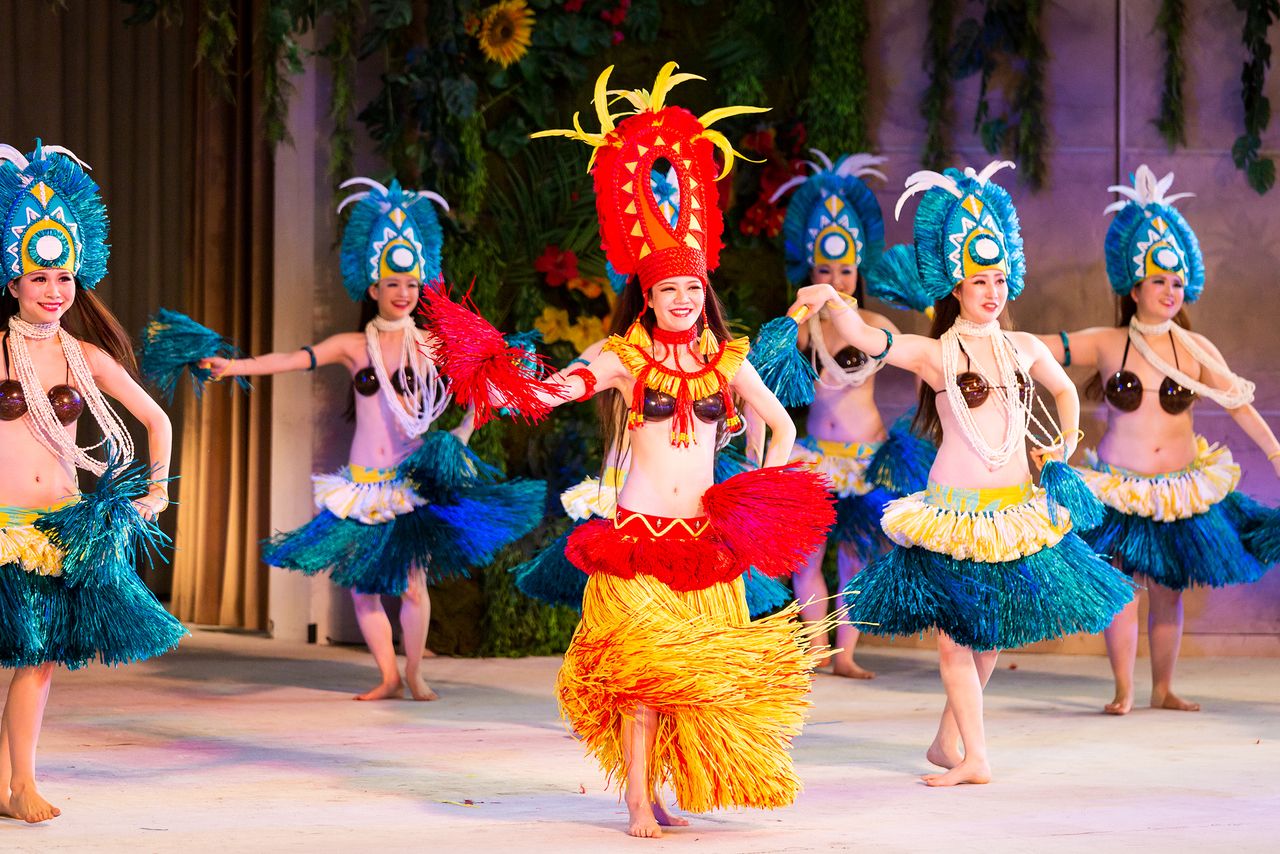
The spa continues to rely on local talent from Iwaki, but now also attracts hopeful hula dancers from around Japan.
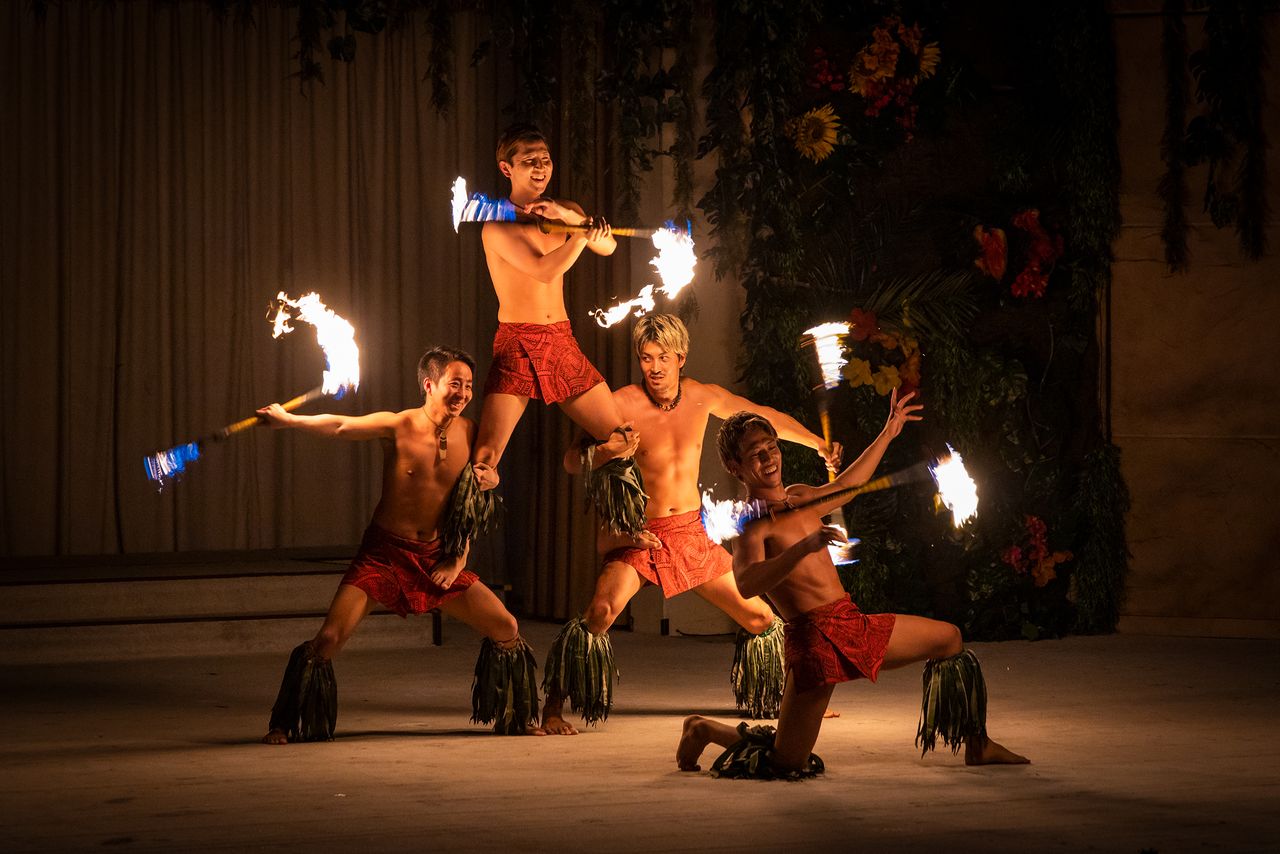
Male dancers perform the Samoan fire knife dance.
Resilience in the Face of Disaster
The resort was mostly unscathed when the Great East Japan Earthquake struck on March 11, 2011, but had to shut down following a strong aftershock on April 11 that severely damaged several structures. It also had to cope with the massive blow to the reputation of all of Fukushima Prefecture from the accident at the Daiichi Nuclear Power Station, including from the steady stream of baseless rumors that swirled in the aftermath of the meltdown. Sekine Hitoshi, president of Jōban Kōsan, recalls, “In an independent survey we took after the earthquake, over 40 percent of respondents said they would not visit Fukushima again. That was a real shock.”
It was the hula dancers who sustained the resort during its shutdown. After a May 3 event at an Iwaki evacuation center, they started the Hula Girl National Kizuna Caravan. “It was hard to commit funds for the caravan, with the resort closed for the foreseeable future,” Sekine recounts. “But we wanted to show that Fukushima was still standing strong. The smiles on the dancers’ faces, who were victims of the disaster themselves, was a real source of strength.”
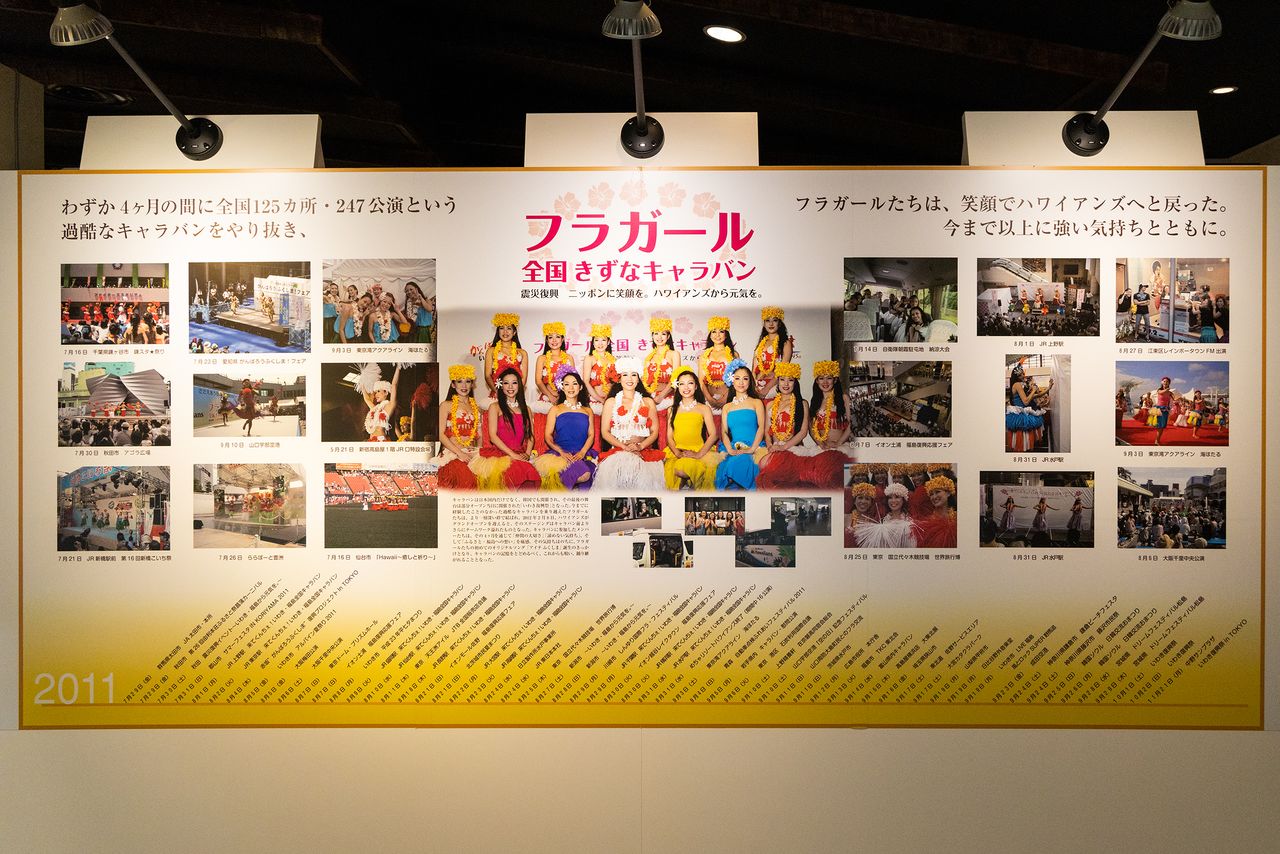
A panel shows the grueling schedule of the caravan.
In a roughly six-month period, the caravan traveled to 125 locations across 26 prefectures and even made an excursion to Seoul, South Korea, putting on a total of 247 performances.
While the caravan was on the road, the resort feverishly carried out repair work. It was able to restart partially in October 2011 ahead of its grand reopening in February 2012, which featured the unveiling of the new hotel Monolith Tower. With the support of regular guests and new fans won over by the caravan, the company quickly saw the number of visitors rebound to pre-disaster levels. Many media outlets portrayed the dancers and the resort’s rapid revival as a symbol of earthquake recovery for the area.

The dancers have become a symbol of Fukushima’s recovery.
The Ichizan Ikka Spirit Lives on
Spa Resort Hawaiians saw its bottom line shrink again with the onset of the COVID-19 pandemic. Weathering the storm, the park returned to profitability in December 2022. Around the same time it announced it was pairing up with the Fukushima Innovation Coast Framework, a government-backed project to rebuild the Hamadōri coastal region of Fukushima.
The government issued evacuation orders for 12 municipalities in the Hamadōri region due to radiation from the Fukushima Daiichi plant, and even 12 years later, recovery work in the area and decommissioning of the nuclear facility continue. Iwaki serves as the southern gateway to Hamadōri for visitors coming from Tokyo, and the resort’s ability to draw people to the region makes it a good place for sharing information and strengthening connections with the public.
The resort has long worked to boost tourism to all of Fukushima with tours to the mountainous Aizu region in the interior of the prefecture. It is currently working with venture companies to test new products at its bustling facilities and is looking into offering tours to the Fukushima Disaster Memorial Museum and other facilities run through the Fukushima Innovation Coast Framework.
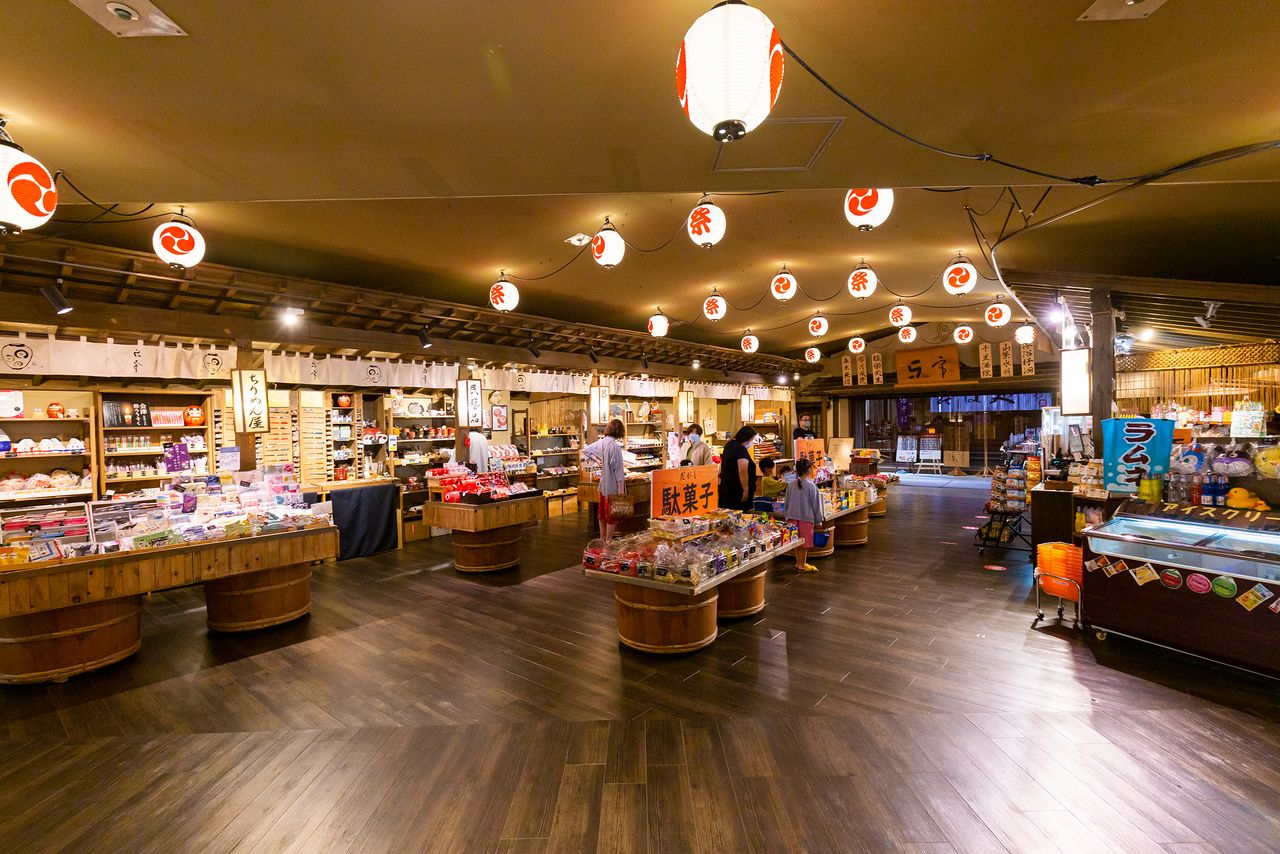
The resort’s souvenir shops offer Hawaiian-themed goods alongside specialty product from Fukushima.
Nakamura’s vision of the Jōban Hawaiian Center was for the hot spring resort to transform the whole region into a tourist destination. Today, the philosophy of ichizan ikka that has guided Spa Resort Hawaiians has evolved to Fukushima ikka—one Fukushima, one family. “We want to bring success to all of Fukushima, not just Hawaiians,” emphasizes Sekine.
The vision and energy of Spa Resort Hawaiians that turned the former burden of hot spring water into a treasure for the region is certain to continue to be a force for Hamadōri as it builds toward a brighter future.
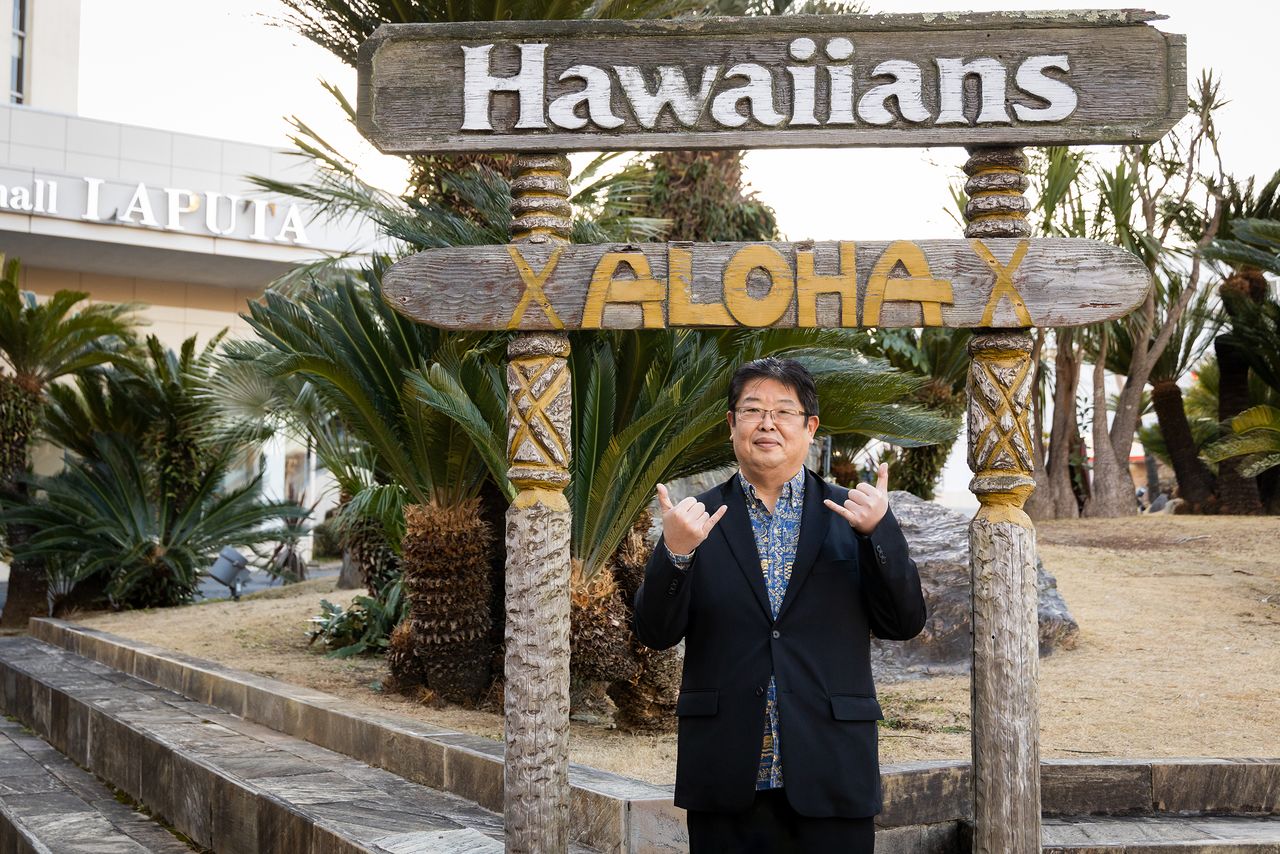
Sekine proudly flashes the shaka sign, the symbol of Hawaiian Aloha spirit.
Spa Resort Hawaiians
- Address: 50 Warabidaira, Jōban-Fujiwaramachi, Iwaki, Fukushima Prefecture
- Open year-round
- Hours: 10:00 am to 9:30 pm
- Admission: Normal season, adults ¥3,570, children ¥2,250, toddlers ¥1,640; holiday season, adults ¥4,120, children ¥2,800, toddlers ¥2,190; water slides require separate tickets
- Getting there: 15 minutes by bus from Yumoto Station on the Jōban line, about three minutes by car from the Iwaki Yumoto Interchange
(Originally published in Japanese. All photos by Nippon.com.)
